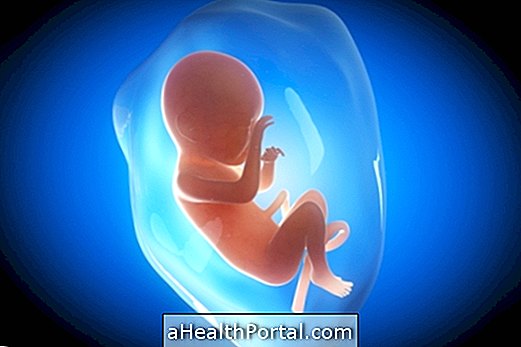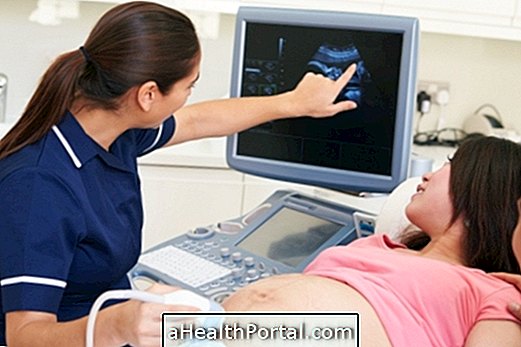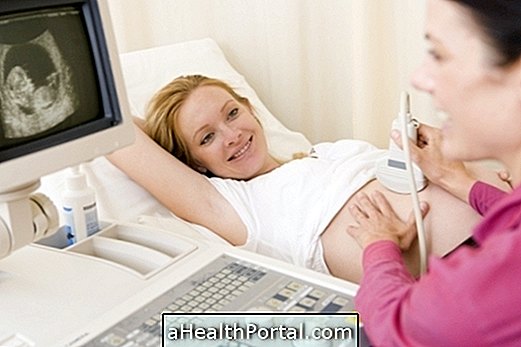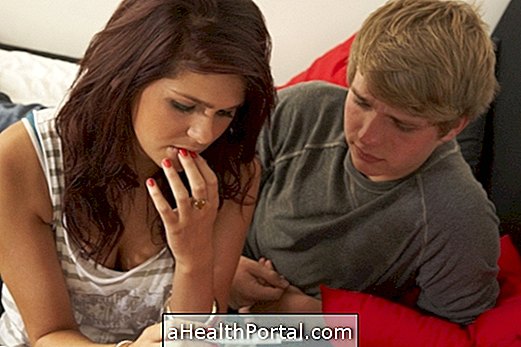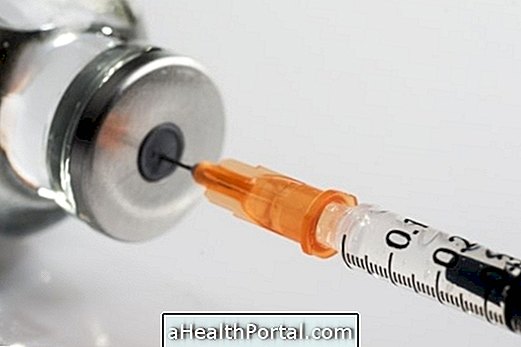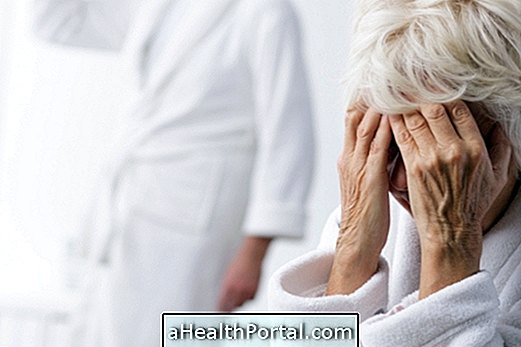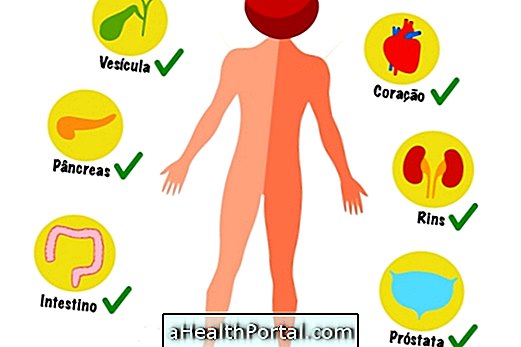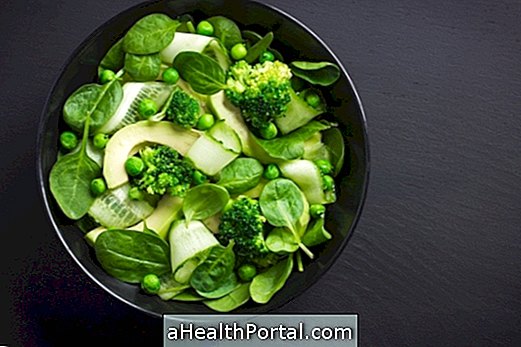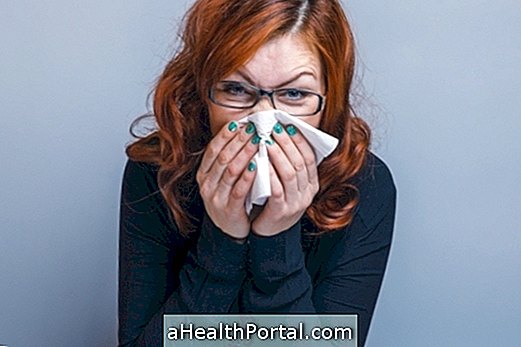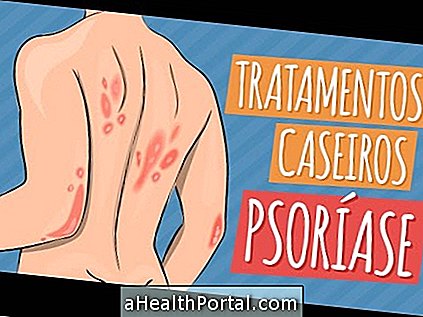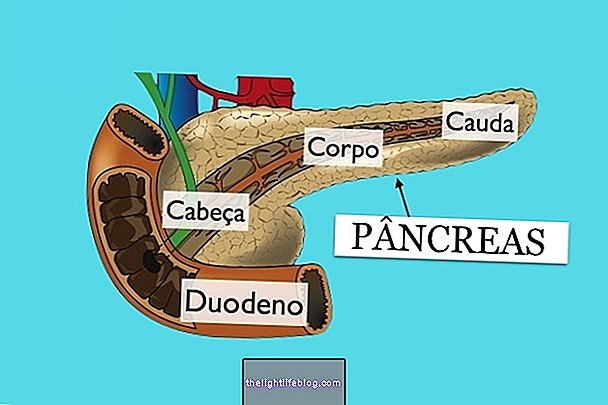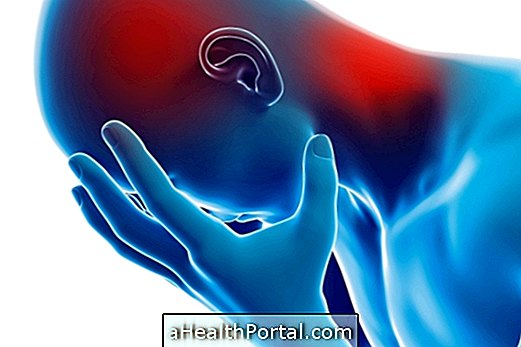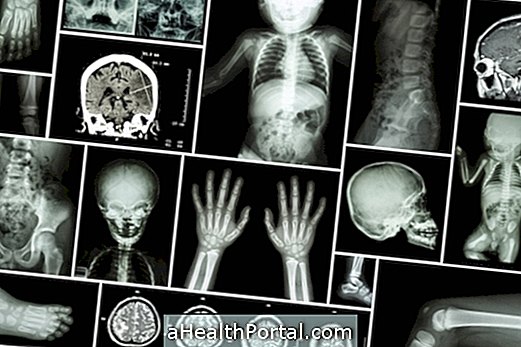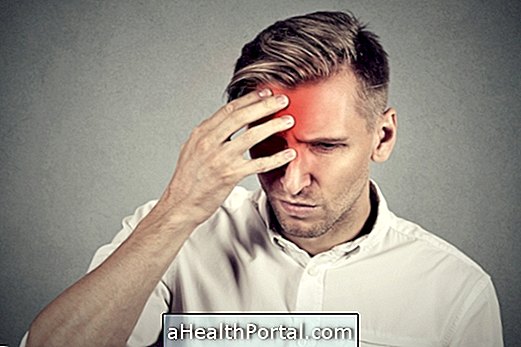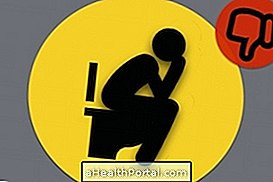Abdominal pain in pregnancy can be caused by the growth of the uterus, constipation or gas, and can be relieved through a balanced diet, exercise or teas.
However, it can also indicate more serious conditions, such as ectopic pregnancy, placental abruption, preeclampsia, or even abortion. In these cases, the pain is usually accompanied by vaginal bleeding, swelling or discharge and in this case, the pregnant woman should go to the hospital immediately.
Here are the most common causes of abdominal pain in pregnancy:
Abdominal pain in the first trimester of pregnancy
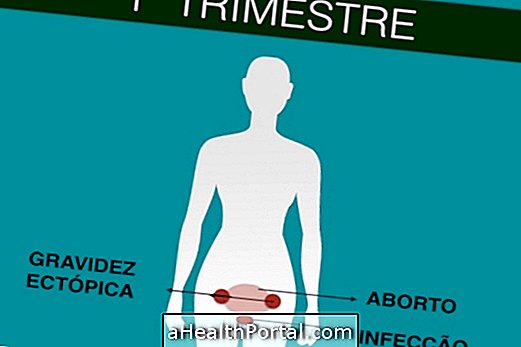
The main causes of abdominal pain in the first trimester of pregnancy (1 to 12 weeks) include:
1. Urinary tract infection
Urinary tract infection is a very common pregnancy problem that usually arises early in pregnancy.
- How to identify: causes symptoms such as pain in the abdomen, burning while urinating, difficulty urinating, urge to urinate even if you have little urine, fever and nausea.
- What to do: You should go to the doctor to have a urine test to confirm the urinary tract infection and start treatment with antibiotics, rest and fluid intake. See what to eat to heal faster in the following video.

2. Ectopic pregnancy
Ectopic pregnancy occurs due to the growth of the fetus outside the uterus, being more common in the fallopian tubes and, therefore, can appear up to 10 weeks of gestation.
- How to identify: It is accompanied by symptoms such as intense abdominal pain on only one side of the belly and worsening with movement, vaginal bleeding, pain during intimate contact, dizziness, nausea or vomiting.
- What to do: If you suspect an ectopic pregnancy, you should go to the emergency room immediately to confirm the diagnosis and start the appropriate treatment, which is usually a surgery to remove the embryo. Learn the main causes and treatment options for pregnancy outside of the womb.
3. Spontaneous abortion
Abortion is an emergency situation that usually happens before 20 weeks.
- How to identify: causes abdominal pain in the foot of the belly, vaginal bleeding or fluid loss through the vagina, outflow of clots or tissues, and headache. See complete list of symptoms of abortion.
- What to do: Immediately go to the hospital to perform an ultrasound to check the baby's heart rate and confirm the diagnosis. When the baby is dead, a curettage or surgery should be performed to remove it, but when the baby is still alive, treatments can be performed to save the baby.
Abdominal pain in the 2nd trimester of pregnancy

Pain in the second trimester of pregnancy (13 to 24 weeks) is usually caused by problems such as:
1. Pre-eclampsia
Pre-eclampsia is the increase in blood pressure in pregnancy, suddenly and difficult to treat.
- How to identify: It has symptoms like pain in the upper right part of the abdomen, nausea, headache, swelling of the hands, legs and face, in addition to blurred vision.
- What to do: It is recommended that you go to the obstetrician as soon as possible to check your blood pressure and start treatment with hospitalization because this is a serious situation that puts the life of the mother and the baby at risk.
2. Placental abruption
Placental abruption is a serious pregnancy problem that can develop after 20 weeks and may lead to premature delivery or abortion depending on the weeks of gestation.
- How to identify: generates symptoms such as severe abdominal pain, vaginal bleeding, contractions and pain in the back.
- What to do: Immediately go to the hospital to evaluate the baby's heartbeat and perform the treatment, which can be done with medicines to prevent uterine contraction and rest. In the most severe cases, delivery may be made before the due date if necessary. Learn what can be done to treat placental abruption.
3. Training Contractions
Braxton-Hicks contractions are training contractions that usually occur after 20 weeks and last less than 60 seconds, but usually cause little abdominal pain.
- How to identify: The belly becomes momentarily hard, which does not always cause abdominal pain. But in some cases there may be pain in the vagina or the foot of the belly, which lasts for a few seconds and then disappears. This pain can happen several times a day. How to Identify Pregnancy Contractions
- What to do: Try to calm down, rest and change position by lying on your side and placing a pillow under your belly or between your legs to feel more comfortable.
Abdominal pain in the third trimester of pregnancy

The main causes of abdominal pain in the third trimester of pregnancy (25 to 41 weeks) are:
1. Constipation and gas
Constipation is most common at the end of gestation due to the effect of hormones and the pressure of the uterus on the intestine, which slows down its functioning, facilitating the development of constipation and the onset of gas.
- How to identify: Generates symptoms such as discomfort or abdominal pain on the left side, colic, and the belly may be more hardened at this pain site.
- What to do: Eat high-fiber foods such as wheat germ, greens, cereals, watermelon, papaya, lettuce and oats, drink about 2 liters of water a day, and do light physical exercise such as 30-minute walks at least 3 times a week. Consult your doctor if the pain does not improve on the same day, if you do not poop 2 days in a row or if other symptoms such as fever or increased pain appear. Know What to Do to Fight Common Pregnancy Constipation
2. Pain in the round ligament
Pain in the round ligament arises due to excessive stretching of the ligament that connects the uterus to the pelvic region due to the growth of the belly.
- How to identify: It causes pain in the lower abdomen that extends into the groin and lasts only a few seconds.
- What to do: Sit, try to relax and, if you help, change position to relieve pressure on the round ligament. Other options are to bend your knees under your abdomen or lie on your side by placing a pillow under your belly and another between your legs.
3. Labor of Labor
Labor is the main cause of abdominal pain in late pregnancy.
- How to identify: It presents symptoms such as abdominal pain, cramps, increased vaginal secretion, gelatinous discharge, vaginal bleeding and uterine contractions with regular intervals. Find out what are the 3 main signs of labor
- What to do: Go to the hospital to see if you are actually in labor, as these pains can become regular for a few hours, but may disappear completely overnight, for example. Resuming the next day, with the same characteristics. If possible call your doctor to confirm if you are in labor and when to go to the hospital.
When to go to the hospital due to pain

Persistent abdominal pain on the right side, close to the hip and low fever that can arise at any stage of pregnancy may indicate appendicitis, a situation that can be serious and therefore should be misdiagnosed as soon as possible. Learn the characteristics of this type of pain in: Appendicitis in pregnancy.
If you suspect appendicitis you should go to the hospital immediately. In addition, you should also go to the hospital immediately or consult the obstetrician accompanying the pregnancy when you have:
- Abdominal pain before 12 weeks of gestation, with or without vaginal bleeding;
- Vaginal bleeding and severe colic;
- Splitting headache;
- More than 4 contractions in 1 hour for 2 hours;
- Swelling of the hands, legs and face;
- Pain when urinating, difficulty urinating or urinating with blood;
- Fever and chills;
- Vaginal discharge.
The presence of these symptoms may indicate a serious complication, such as preeclampsia or ectopic pregnancy, so it is important for the woman to see the obstetrician or to go to the hospital immediately to receive appropriate treatment as soon as possible.
If you want to know information about belly ache, type diarrhea in pregnancy see: How to treat belly ache in pregnancy.
